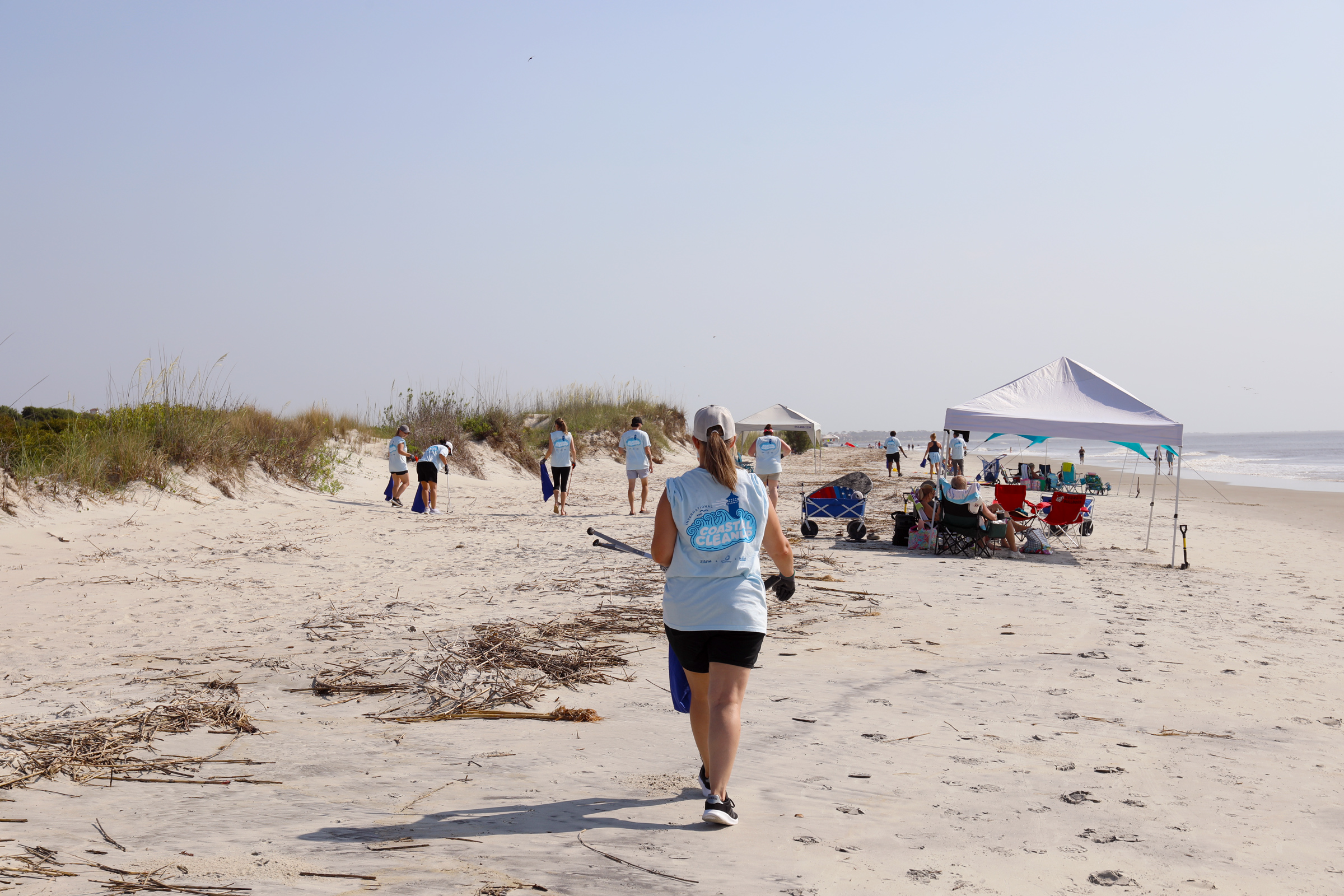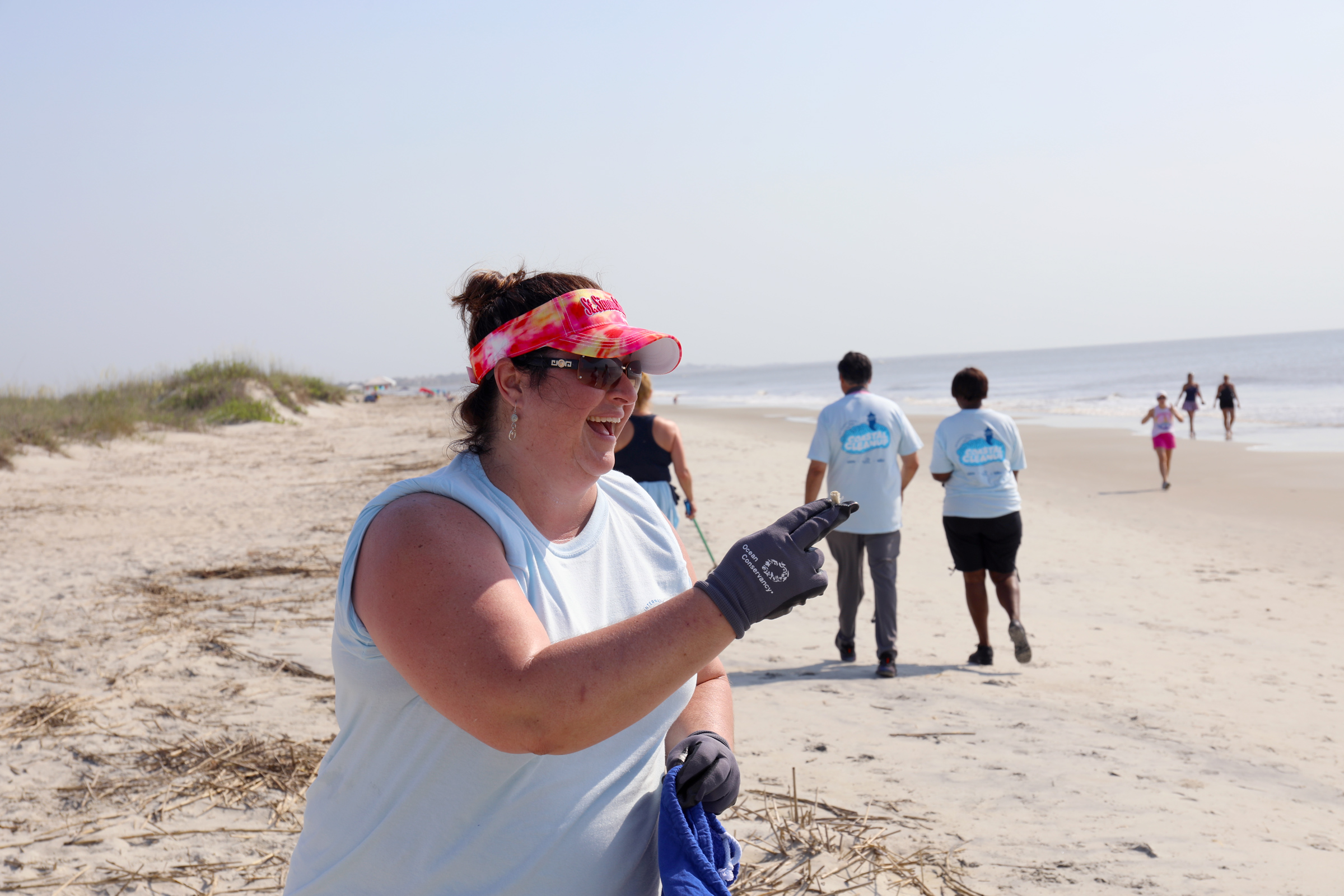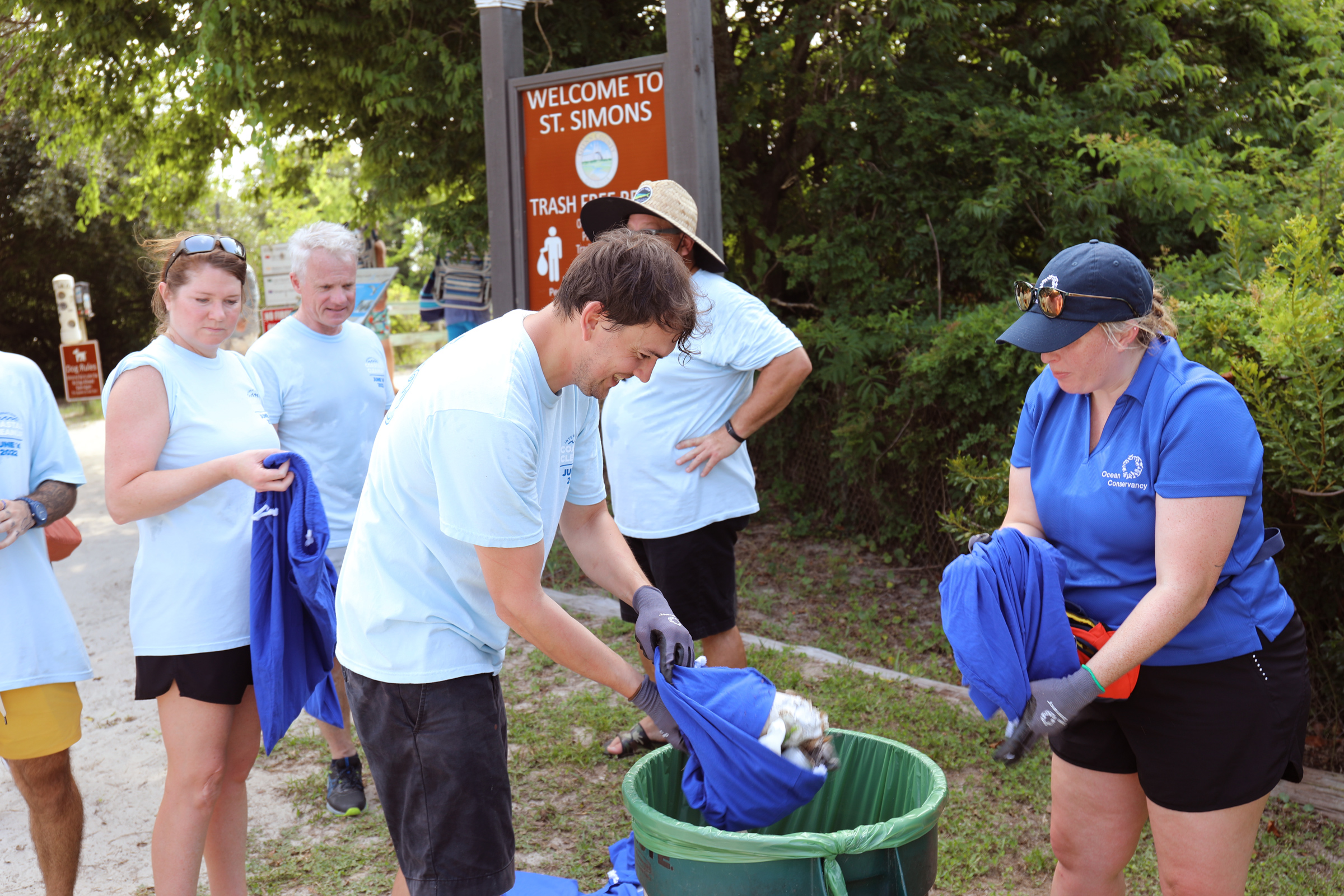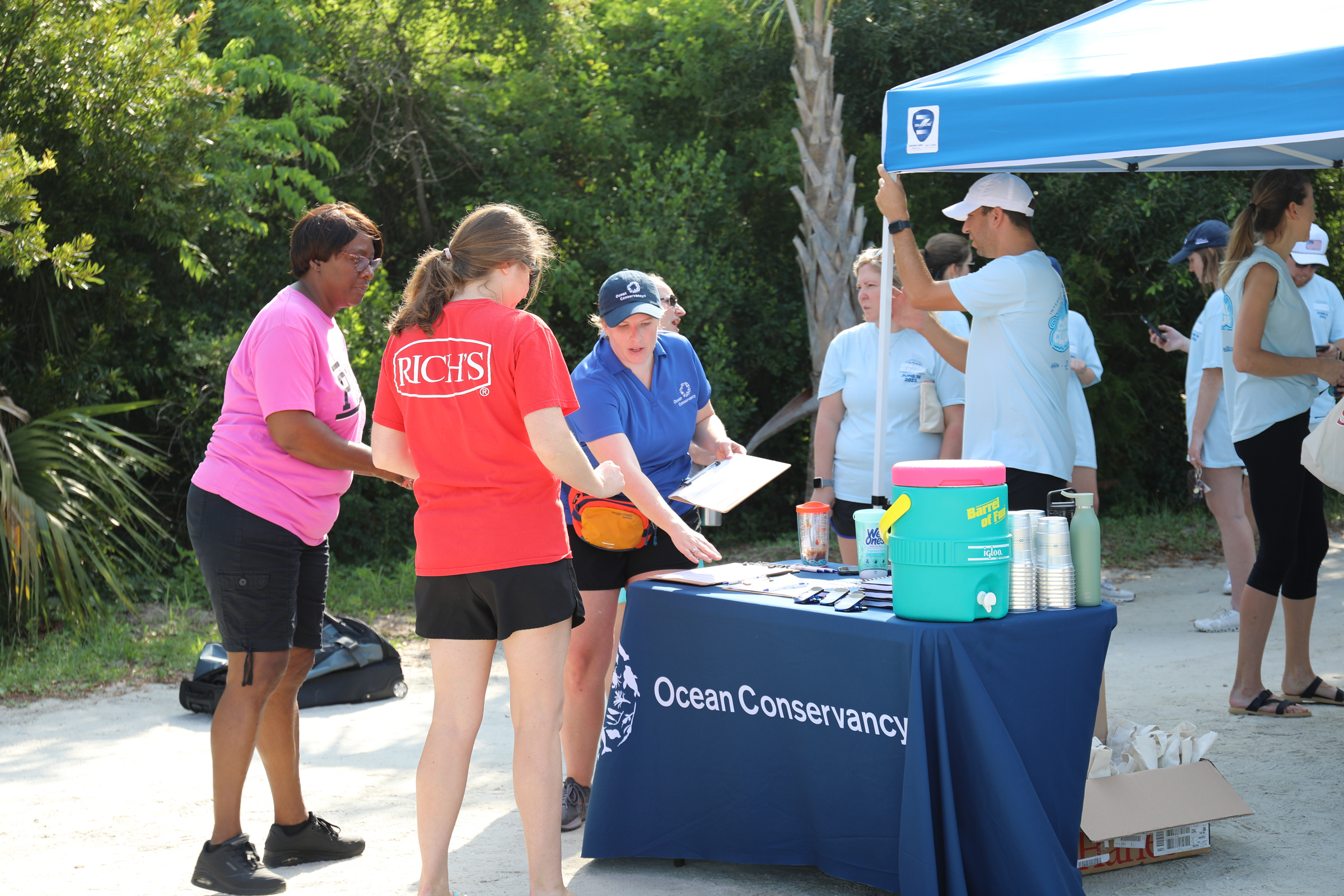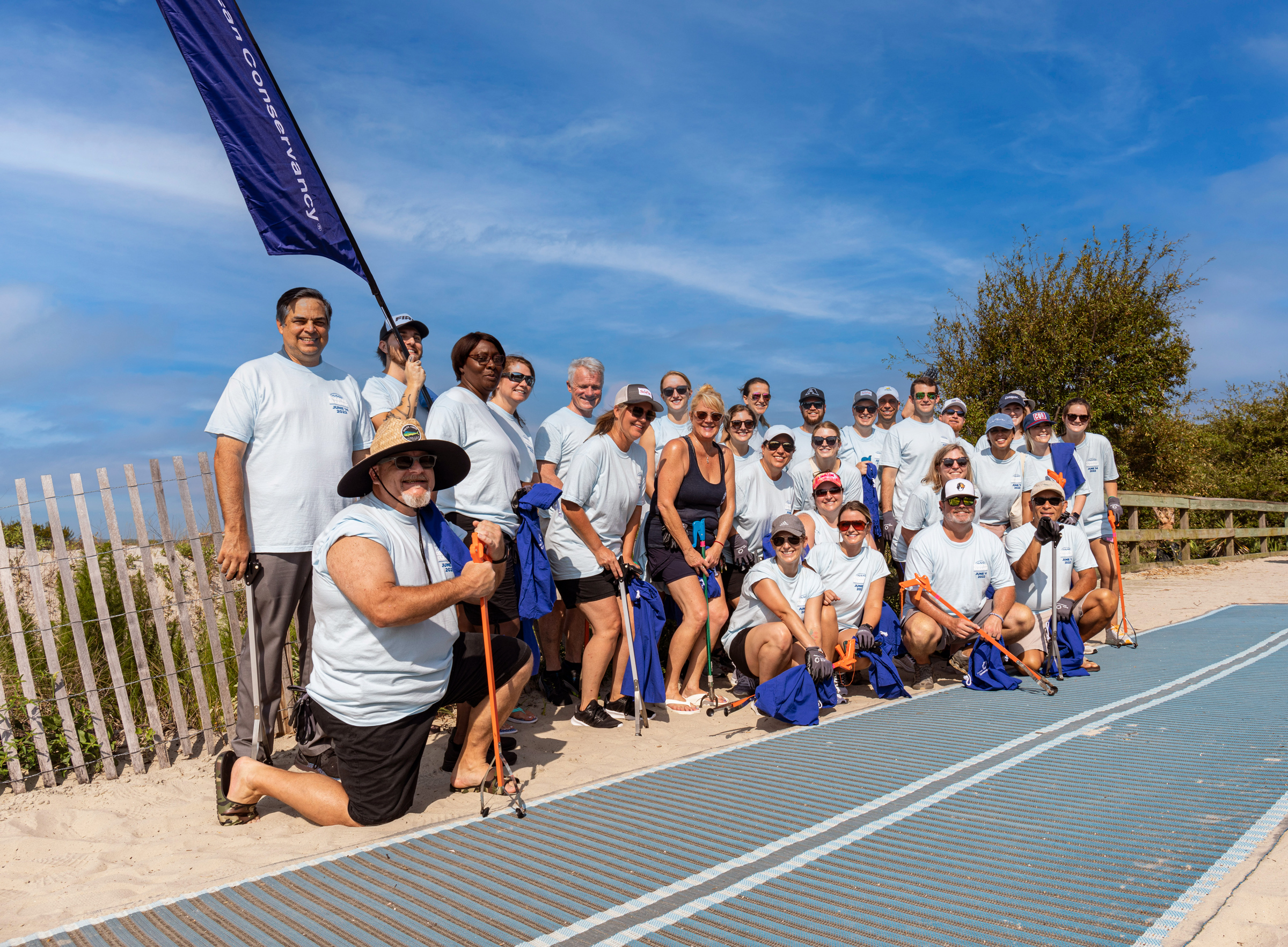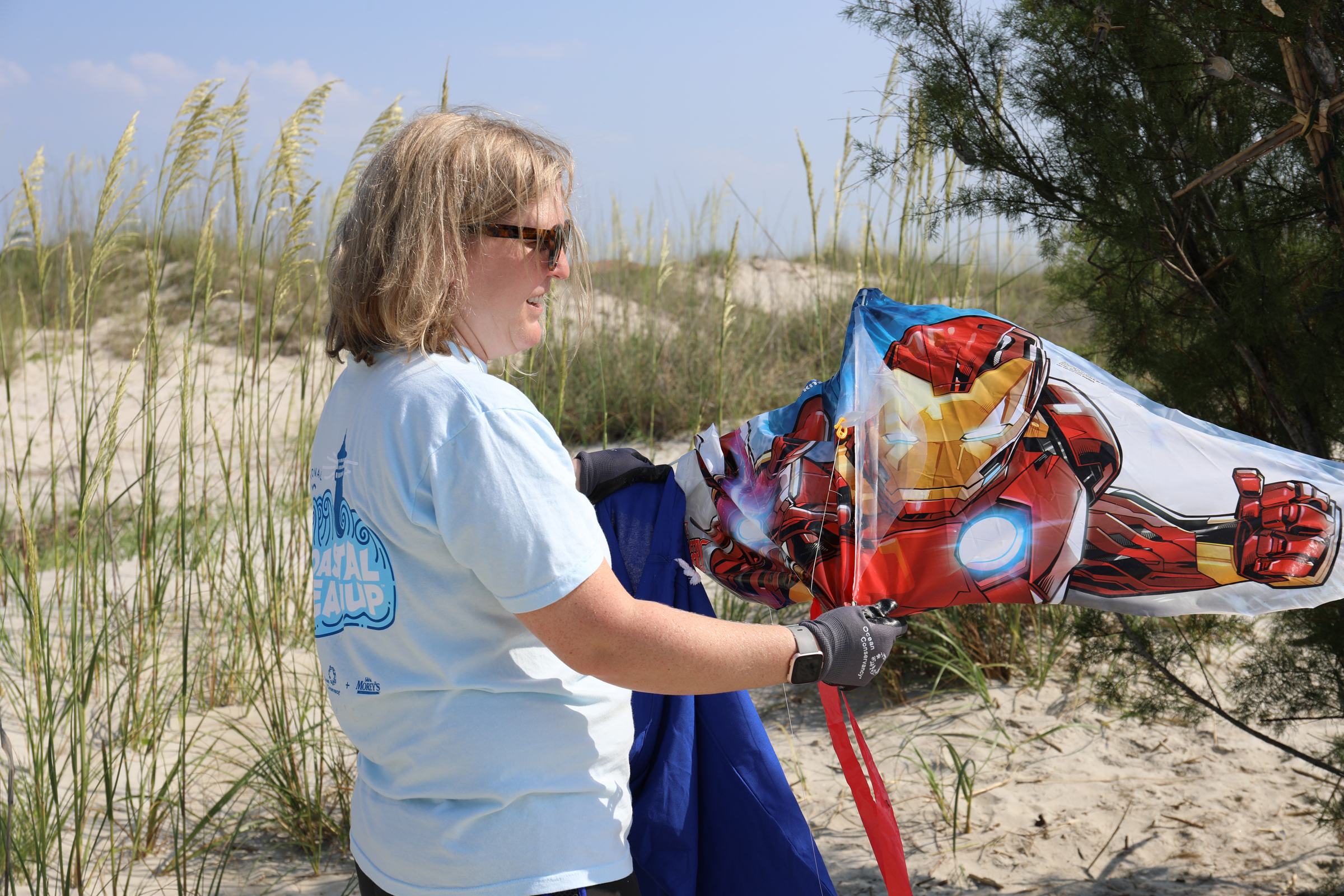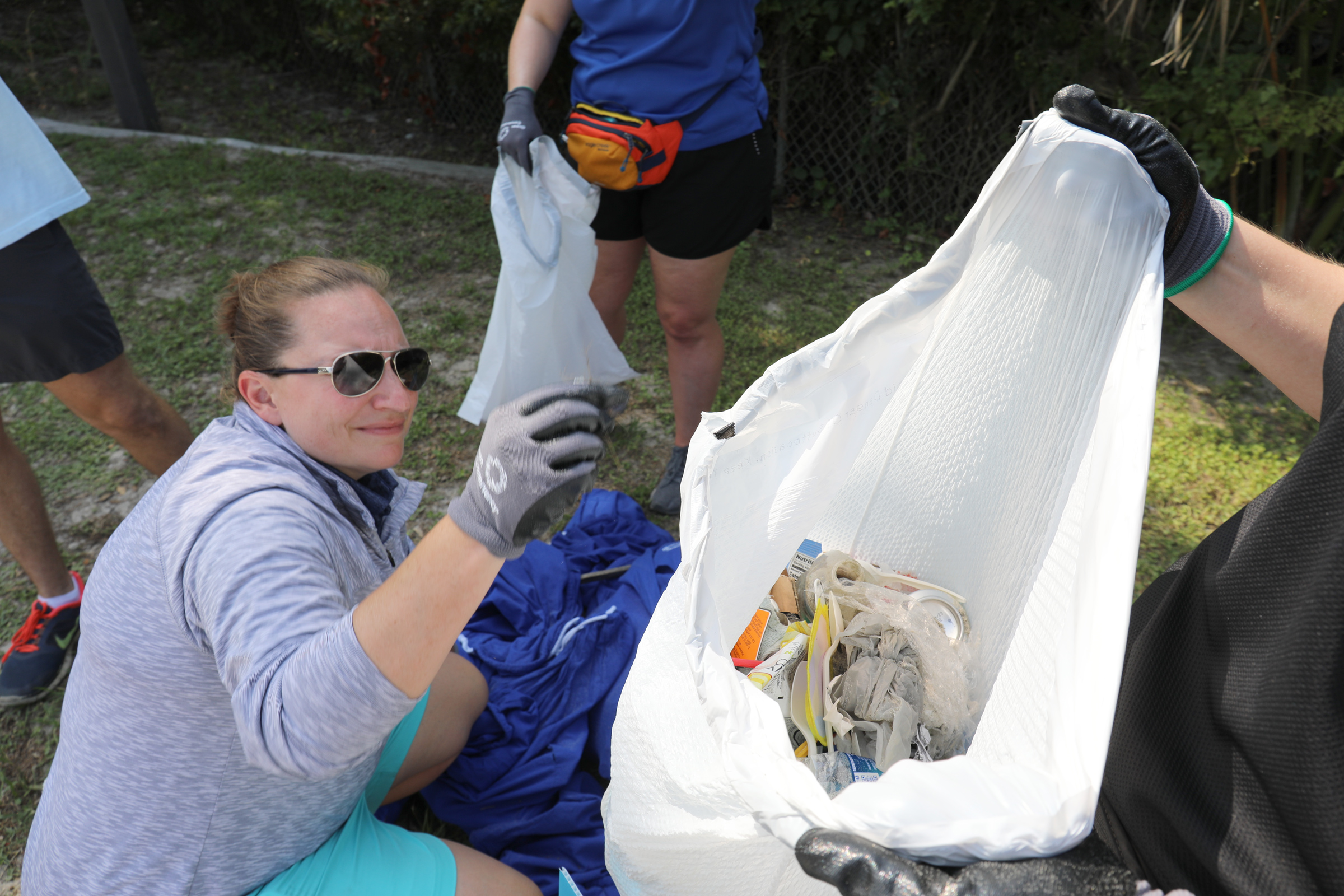While Morey’s and SeaPak plan to do more beach cleanups, these events are only part of the companies’ $100,000 pledge to the Ocean Conservancy.
The bulk of that work happens far from where consumer eyes can see it. But it’s important that they know about it and how their decisions impact the environment—especially because there are so many options out there when it comes to seafood, and not all of them are responsibly sourced or sustainable.
In the 1980s, most seafood was wild-caught. Since then the industry has shifted towards aquaculture or farm-raised products (salmon, tuna, shrimp, etc.)—a practice Rich’s and its two consumer brands have wholeheartedly embraced as the future of sustainability.
“You can’t just have wild-caught. People are eating too much seafood to get by on it,” said Wolke.
And yet misconceptions about wild-caught seafood versus farm-raised abound.
For example, while wild-caught seafood like salmon, tuna, and shrimp can sometimes be more flavorful than farm-raised, the quality and flavor profile is less consistent. The supply of wild-caught seafood is also unpredictable and beholden to seasonality. And this doesn’t even account for the issue of bycatch.
“With a lot of wild seafood, you’re really limited by the season as to what you can catch. Aquaculture allows us to provide consumers with a fresh supply of seafood year-round,” said Wolke.
And while farm-raised seafood isn’t a perfect solution—irresponsible operations can actually add to the issues of pollution and overfishing the practice is supposed to reduce—Wolke and her team understand that it plays an important role in balancing wild-caught seafood by adding more consistency, flexibility, and resources.
That’s why, along with organizing beach cleanups like the one this past June, Rich’s, Morey’s, and SeaPak are also taking steps to introduce aquaculture to local communities and optimize farms where they already exist. These efforts are not only crucial to achieving sustainability goals, but they also create equity and opportunity in local fishing communities around the world.
As part of their Fishery Improvement Project, the three organizations seek out local fisheries that aren’t quite up to standard or meeting the BAP’s Best Aquaculture Standards and work to get them where they need to be.
“We invest money and resources to get them up to standard and eventually purchase the fish and shrimp they produce. We’re helping them create farms, create jobs, and, ultimately, create high-quality seafood that other companies will buy as well.”

